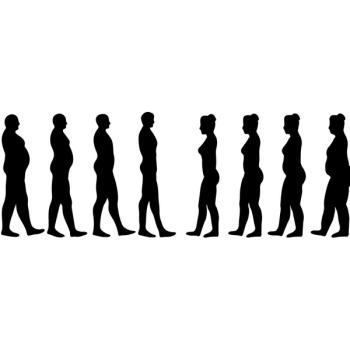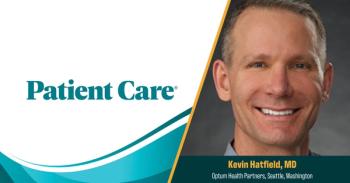
More Seniors at Risk for Drug-Drug Interactions
Polypharmacy and undisclosed complementary/alternative medicines increase the risk for unforeseen interactions.
Polypharmacy, undisclosed CAM use boost reaction risk
One in six U.S. seniors might be potentially at risk for a major drug-drug interaction, and 25% of adults did not disclose herb or supplement use to primary care physicians, two groups of researchers reported.
Over a 5-year period, prescription use, polypharmacy, and supplement use among seniors all increased by 4%, 5%, and 12%, respectively, and over-the-counter medication decreased 6%,
In addition, concurrent use of five or more medications or supplements of any type increased from 53% to 67% over the 5-year period (P<.001), and concurrent use of two or more dietary supplements increased from 32% to 47% (P<.001), they stated.
In a separate
More Meds
As part of the
The use of at least one prescription medication increased from 84% of individuals in the first wave (95% CI 82%-86%) to 88% in the second wave (95% CI 86%-90%, P=0.003). Polypharmacy, the use of at least five prescriptions, also saw an increase from 31% in the first wave to 36% in the second wave (P=0.02).
On the other hand, over-the-counter (OTC) medication use decreased over the 5-year period. In the first wave, 44% of participants used an OTC on a daily or weekly basis (95% CI 42%-47%), compared with 38% in the second wave (95% CI 35%-41%). Dietary supplement use rose from 52% (95% CI 48%-55%) to 64% (95% CI, 61%-67%, P<.001 for both).
Within therapeutic classes, top increases were seen among statins (34% to 46%), antiplatelets (33% to 43%), omega-3 fish oil (5% to 19%), vitamin D (5% to 16%), and aspirin (30% to 40%).
The authors estimated that the increased use of prescription medications and supplements also increased the risk for potential major drug-drug interactions from 8% in 2005-2006 to 15% in 2010-2011 (P<.001).
Based on the 20 most commonly used medications and the 20 most commonly used supplements, the researchers identified 93 potential drug-drug interactions. And among the 20 common medications, 15 interaction were classified as "potentially of major or life-threatening severity."
The study had some limitations. It was not designed to evaluate health outcomes directly, including adverse drug events, the authors explained. Also, a range of factors can influence adverse drug events, such as liver and kidney function, timing of concurrent use, and disease severity, and these factors were not analyzed.
Changes: Good or Bad?
"These results are consistent with a large body of research that has documented a seemingly inexorable rise in medication use among older adults. What they do not tell us is whether these changes are good or bad,"
"This is the rub ... The use of multiple medications indicates that a person is at higher risk of medication-related problems. It does not tell us what those problems are or what to do about them," Steinman said. "This is particularly true when most or all of the medications can be linked to practice guidelines for the patient's chronic diseases. This is largely where the current state of practice is stuck."
Steinman argued for the need to create systems that support an ongoing process of monitoring medications, along with a team-based, patient-engagement approach to integrating the system and to ensure accuracy and compliance.
Quiet About CAM
Jou and Johnson looked at data from the National Health Interview Survey (NHIS). They found that out of 34,525 adults, 30% had used CAM in 2012, and 66% had a primary care physician.
A total of 7,493 had used CAM and had a primary care physician, and 42% said they did not disclose their
Nondisclosure was
The most common reason for nondisclosure was lack of inquiry by physicians (57%), while 47% of patients said they didn't believe their physician needed to know about their use of CAM.
"Contrary to earlier findings, our results attribute most nondisclosure to physicians not asking about CAM use or to concerns about physician knowledge regarding CAM rather than to physician discouragement or negativity about the use of CAM," Jou and Johnson wrote.
Only 2% of patients said their physician had discouraged them from CAM use in the past, and 3% said they had received discouragement in the present.
"Physicians should consider more actively inquiring about patients' use of CAM, especially for modalities likely to be medically relevant," they wrote.
Reviewed by
This article was first published on
Disclosures:
NSHAP is supported by grants from the National Institute on Aging, the Office of Women's Health Research, the Office of AIDS Research, and the Office of Behavioral and Social Sciences Research.
Qato and most co-authors disclosed no relevant relationships with industry. One co-author disclosed relevant relationships with Pain Navigator and IMS Health.
Steinman disclosed support from the National Institute on Aging, and a relevant relationship with iodine.com.
The study by Jou and Johnson was partially supported by the Integrative Health & Wellbeing Research Program at the Center for Spirituality & Healing, University of Minnesota.
Jou and Johnsons disclosed no relevant relationships with industry.
Newsletter
Enhance your clinical practice with the Patient Care newsletter, offering the latest evidence-based guidelines, diagnostic insights, and treatment strategies for primary care physicians.


















































































































































































































































































